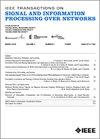Efficient and Robust Continual Graph Learning for Graph Classification in Biology
IF 3
3区 计算机科学
Q2 ENGINEERING, ELECTRICAL & ELECTRONIC
IEEE Transactions on Signal and Information Processing over Networks
Pub Date : 2025-07-24
DOI:10.1109/TSIPN.2025.3592321
引用次数: 0
Abstract
Graph classification is essential for understanding complex biological systems, where molecular structures and interactions are naturally represented as graphs. Traditional graph neural networks (GNNs) perform well on static tasks but struggle in dynamic settings due to catastrophic forgetting. We present Perturbed and Sparsified Continual Graph Learning (PSCGL), a robust and efficient continual graph learning framework for graph data classification, specifically targeting biological datasets. We introduce a perturbed sampling strategy to identify critical data points that contribute to model learning and a motif-based graph sparsification technique to reduce storage needs while maintaining performance. Additionally, our PSCGL framework inherently defends against graph backdoor attacks, which is crucial for applications in sensitive biological contexts. Extensive experiments on biological datasets demonstrate that PSCGL not only retains knowledge across tasks but also enhances the efficiency and robustness of graph classification models in biology.高效鲁棒连续图学习在生物图分类中的应用
图分类对于理解复杂的生物系统至关重要,其中分子结构和相互作用自然地被表示为图。传统的图神经网络(gnn)在静态任务中表现良好,但在动态环境中由于灾难性遗忘而表现不佳。我们提出了扰动和稀疏化连续图学习(PSCGL),这是一个鲁棒和高效的连续图学习框架,用于图数据分类,特别是针对生物数据集。我们引入了一种扰动采样策略来识别有助于模型学习的关键数据点,并引入了一种基于图案的图稀疏化技术来减少存储需求,同时保持性能。此外,我们的PSCGL框架固有地防御图形后门攻击,这对于敏感的生物环境中的应用程序至关重要。在生物数据集上的大量实验表明,PSCGL不仅可以跨任务保留知识,还可以提高生物图分类模型的效率和鲁棒性。
本文章由计算机程序翻译,如有差异,请以英文原文为准。
求助全文
约1分钟内获得全文
求助全文
来源期刊

IEEE Transactions on Signal and Information Processing over Networks
Computer Science-Computer Networks and Communications
CiteScore
5.80
自引率
12.50%
发文量
56
期刊介绍:
The IEEE Transactions on Signal and Information Processing over Networks publishes high-quality papers that extend the classical notions of processing of signals defined over vector spaces (e.g. time and space) to processing of signals and information (data) defined over networks, potentially dynamically varying. In signal processing over networks, the topology of the network may define structural relationships in the data, or may constrain processing of the data. Topics include distributed algorithms for filtering, detection, estimation, adaptation and learning, model selection, data fusion, and diffusion or evolution of information over such networks, and applications of distributed signal processing.
 求助内容:
求助内容: 应助结果提醒方式:
应助结果提醒方式:


